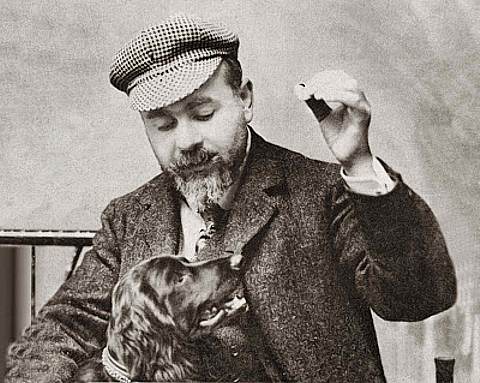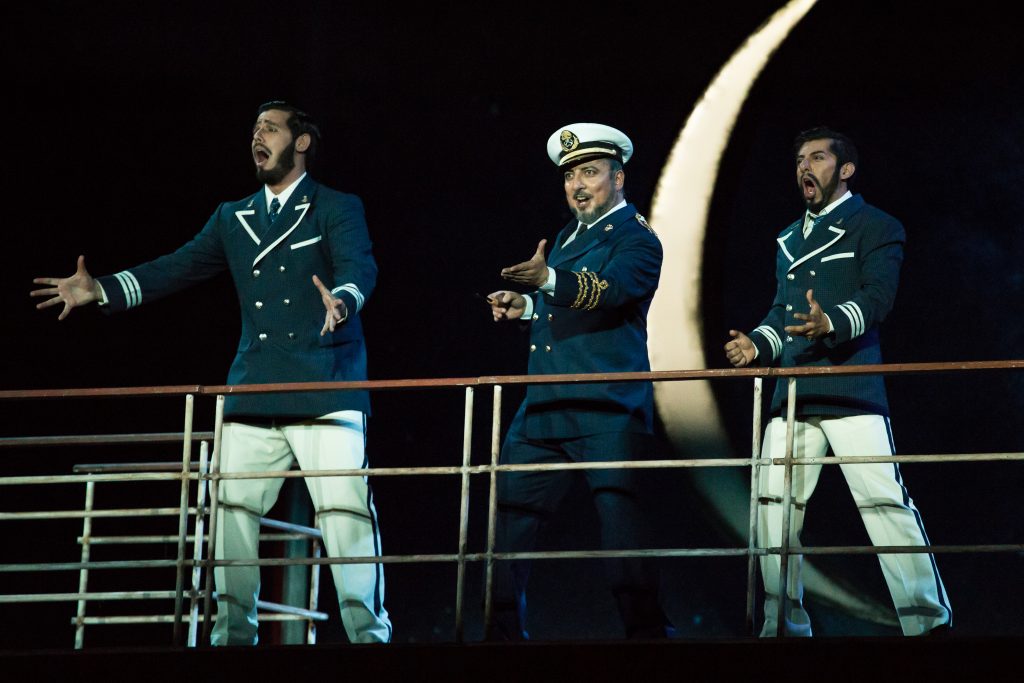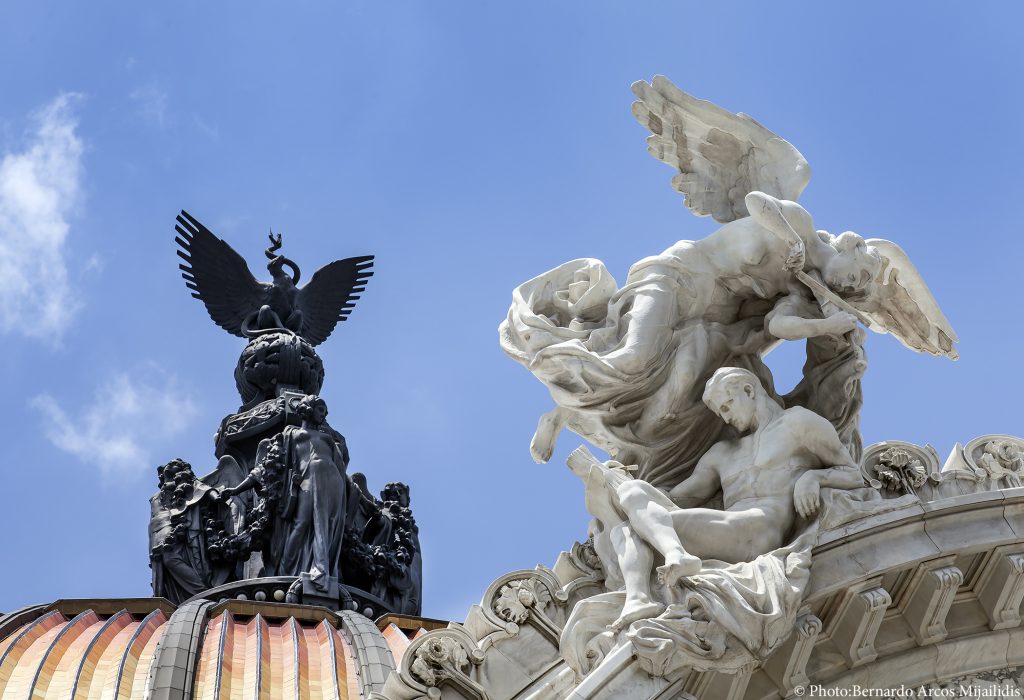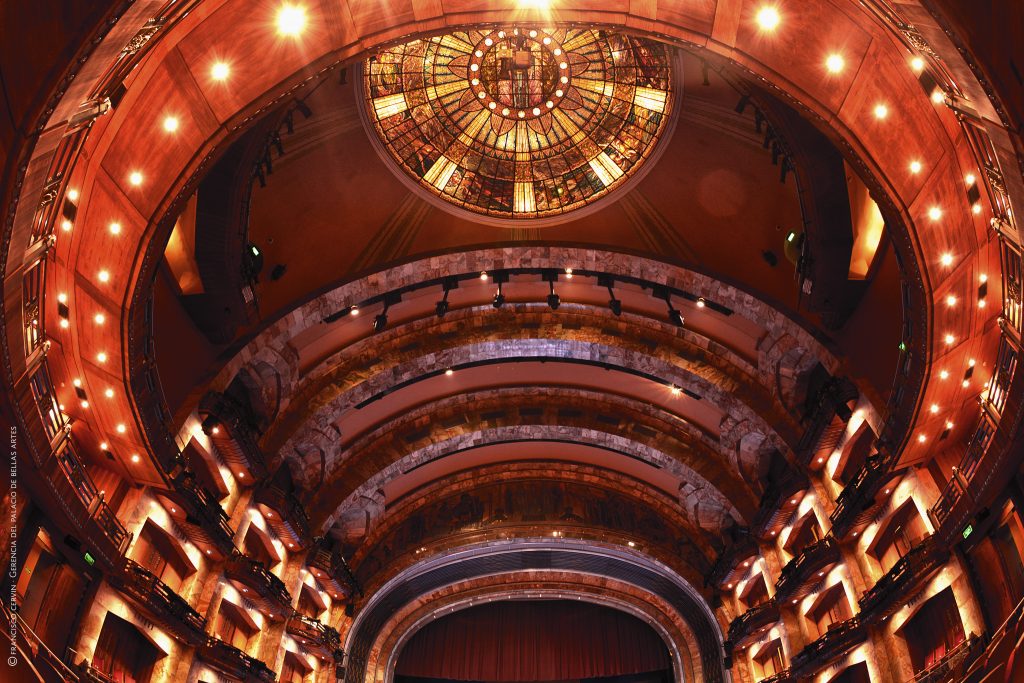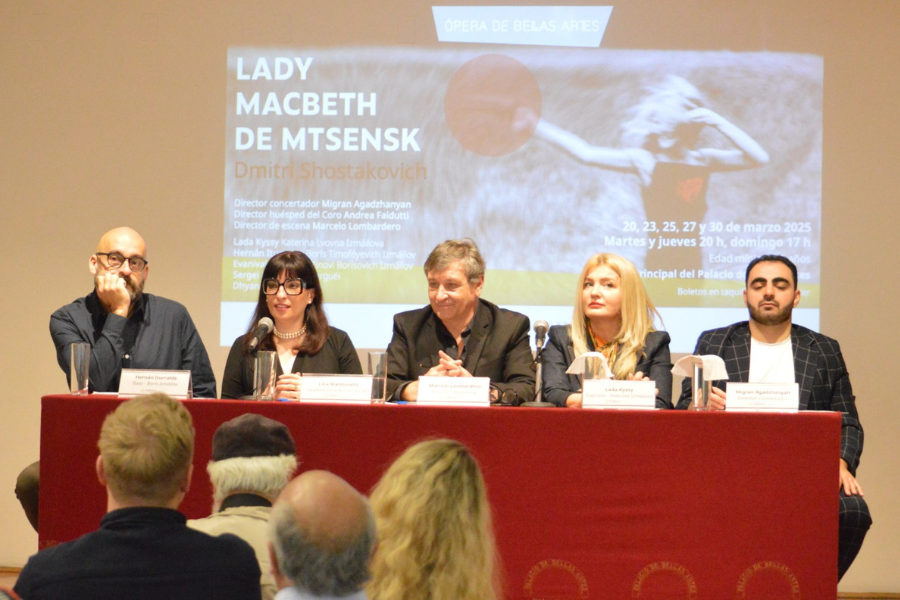Theater of the Month: Palacio de Bellas Artes de México, between the mestizo heritage and the diversity of cultures
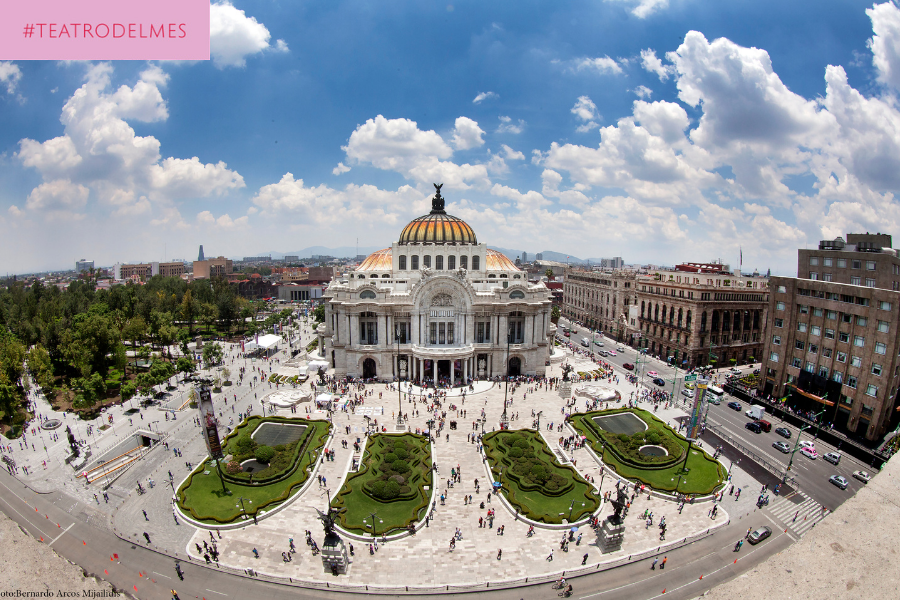
The history of the Palacio de Bellas Artes de México has a unique dynamic, intertwined by two fundamental periods in the country’s history: the Porfirio Díaz regime and the Mexican Revolution. Its construction is also marked by the development and beautification of Mexico City, in a modernization framework typical of Latin American societies at the beginning of the 20th century. Due to the different stages -and times- in its construction, the building has different architectural styles that are imposed in the middle of the historic center of the Mexican capital. Today, the Palace of Fine Arts, the great monument to the country’s culture, houses different rooms, stages and artistic institutions, among which the National Opera Company (Opera de Bellas Artes) stands out, one of the most important on the continental level. for his contribution to the development of lyricism in Mexico.
In May 1950, the Palacio de Bellas Artes de México witnessed a memorable moment in opera history. The Italian soprano Maria Callas raised her lyrical career internationally and, as part of a tour that took her to different countries, she visited the great cultural palace of the Mexican capital to sing the operas Norma, by Bellini, and Aída, by Verdi . At the end of the second act of the Verdi work, the artist inserted a famous semi-acute E flat that, according to the myth, was a revenge against the tenor Kurt Baum, who was also part of the cast and would have done something, inexplicable and unknown, that it filled Callas’s patience. The dazzled audience surrendered to the Italian diva in a burst of applause and the recording went down in history.
Maria Callas performed at the Palacio de Bellas Artes twice more, in 1951 and 1952. By then, the theater had already established itself as the leading artistic institution in a country that was experiencing a period of miraculous growth and development. The Fine Arts scene was highly valued on the international circuit of culture. Lyrical singers of the level of Luciano Pavarotti, Plácido Domingo, Marilyn Horne or Teresa Berganza are also part of the legendary performances that this iconic palace has hosted.
The story, however, goes beyond culture and the arts and anecdotes of international divas, and intersects with political and social milestones that mark the tradition of Mexico. The Porfirio Díaz regime, the consequent Mexican Revolution, the inaugurations of presidents such as Adolfo Ruiz Cortines (1952) or Gustavo Díaz Ordaz (1964) and the founding of the National Institute of Fine Arts (INBA) in 1946, are some of the events in which the palace, in one way or another, has been present to, until today, live with the memory of a Mexico that proudly rescues its heritage.
The road to a national theater
During the first years when Mexico began to build an independent republic, the military and politician Antonio López de Santa Anna inaugurated the first great architectural work dedicated to culture in the country. The Gran Teatro de Santa Anna – baptized thus in a delusion of megalomania – opened its doors to the public in 1844. Later, when López de Santa Anna’s popularity declined, the theater underwent successive name changes depending on who was in charge: It was called the Gran Teatro de Vergara, the Great Imperial Theater during the Second Empire of Mexico under Maximiliano I and finally, with the restoration of the Republic, it was awarded the distinctive Grand National Theater.
At the beginning of the 20th century, many Latin American nations celebrated the centenary of independence. Like other capitals of the continent, Mexico City entered a process of beautification, modernization and reception of architectural influences from the Europe of the new century. European architects, engineers and designers visited the country to contribute to the design and construction of new buildings that will highlight the greatness and progress of the states.
In 1900, the Mexican engineer Gonzalo Garita and the Italian architect Adamo Boari presented projects to the Mexican Government to remodel the Great National Theater as part of the celebration of the independence centenary. The authorities of the Porfiriato, however, chose to demolish the old theater in 1904 and build a totally new building. In 1905, the first stone of the new National Theater was laid, which would still have a long way to go to complete its construction and become the cultural emblem that it is today.
From the Revolution to Art Deco
The outbreak of the Mexican Revolution in 1910 generated a period of worsening economic conditions in Mexico and political and social instability slowed down the pace of construction of the new National Theater. The architect Adamo Boari chose to return to Europe in the midst of a turbulent and fiery climate. The work had almost completed its exterior, except for the dome, which still had to be covered.
Despite the fact that the theater was still incomplete, it became an important event center for Mexican society, being the place chosen to celebrate different civic and political events. With this enthusiasm, little by little the idea of finishing the construction gained interest.
The financial recovery of Mexican institutions and states in the post-revolution gave way to an era that would initiate the country’s path towards social, political, economic and cultural development. During the 1930s, the nascent industrial bourgeoisie was consolidated in Mexico in parallel with the advance of reformist economic policies. During the presidency of Pascual Ortiz Rubio and the support of the then Secretary of the Treasury, Alberto Pani Arteaga, the process to consolidate the construction of the theater was revitalized.
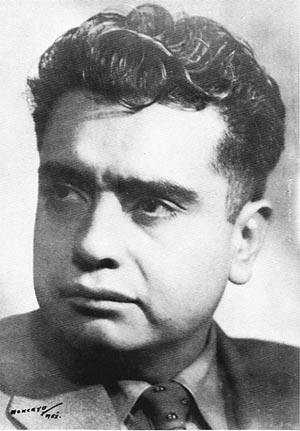
The Mexican pianist and composer José Pablo Moncayo, author of operas such as “La mulata de Córdoba”. Photo: Creative Commons.
The Mexican architect Federico Mariscal Piña was in charge of completing the work, with the instructions to “conceive a building that is the seat of a national institution of an artistic nature.” It would not only house museums, but it would also become the main public center for the dissemination of arts and cultures in the country. The architectural and artistic stamp, for its part, was a Mexican redefinition of the Art Deco trend, a logical step from the modernist Art Nouveau. Thus, the project would be renamed as we know it today: Palacio de Bellas Artes de México, inaugurated on November 29, 1934.
Opera made in Mexico
According to the Mexican writer Jaime Bali Wuest:
“It was the 29th of [November], 1934 when the president and his entourage were comfortably installed in the presidential box, the clock showed 10 hours and 17 minutes. Inside the enclosure, which showed empty seats and while the public pressed to enter, the notes of the National Anthem were heard, interpreted by a choir of a thousand voices accompanied by the Symphony Orchestra, under the direction of Carlos Chávez. Immediately, the words of Don Antonio Castro Leal, head of the Department of Fine Arts, were heard. Without delay the symphony interpreted the Proletarian Symphony of maestro Chávez, with the title of Llamadas. Then came a brief intervention by the President of the Republic, General Abelardo L. Rodríguez, formally declaring the site open ”(Bali, 2010)
Mexican cultural life also began to consolidate in institutions. In 1946, the National Institute of Fine Arts (INBA) was founded, a government agency dedicated to the promotion, development, and dissemination of arts and culture in Mexico. Among the different artistic groups that the Palace of Fine Arts houses, through its Institute, there is, of course, the National Opera Company (Opera de Bellas Artes), founded in 1948 and whose first performance was a production of Tosca de Giacomo Puccini that same year.
Opera in Mexico had already traveled its own stretch. La Parténope, by Manuel de Sumaya, was the first opera written in the country, in 1711. Then, during the 19th century, the period of the “nineteenth-century opera” developed, in which works such as Catalina de Guisa, by Cenobio, stand out. Paniagua, Ildegonda, by Melesio Morales, and Atzimba, by Ricardo Castro. Subsequently, with the inauguration of INBA, the promotion of lyric by the National Opera Company resulted in premieres of outstanding Mexican operas of the 20th century, among which are Elena by Eduardo Hernández Moncada, Carlota by Luis Sandi and La mulata de Córdoba by José Pablo Moncayo, with a libretto by Agustín Lazo and Xavier Villaurrutia.
Throughout the 20th and 21st centuries, the Palacio de Bellas Artes has hosted a diversity of artistic and cultural experiences that make it the main focus for the development of culture -and lyrical- in the country. It has hosted world premieres of Mexican operas such as La mujer y la sombra de ella (1981) by Miguel Alcázar, La Güera (1982) by Carlos Jiménez Mabarak and, more recently, The game of insects (2009) by Federico Ibarra. In turn, artistic groups such as the National Symphony Orchestra, the National Dance Company, the Fine Arts Opera, the Madrigalists Choir and the Fine Arts Chamber Orchestra, among others, depend on the INBA.
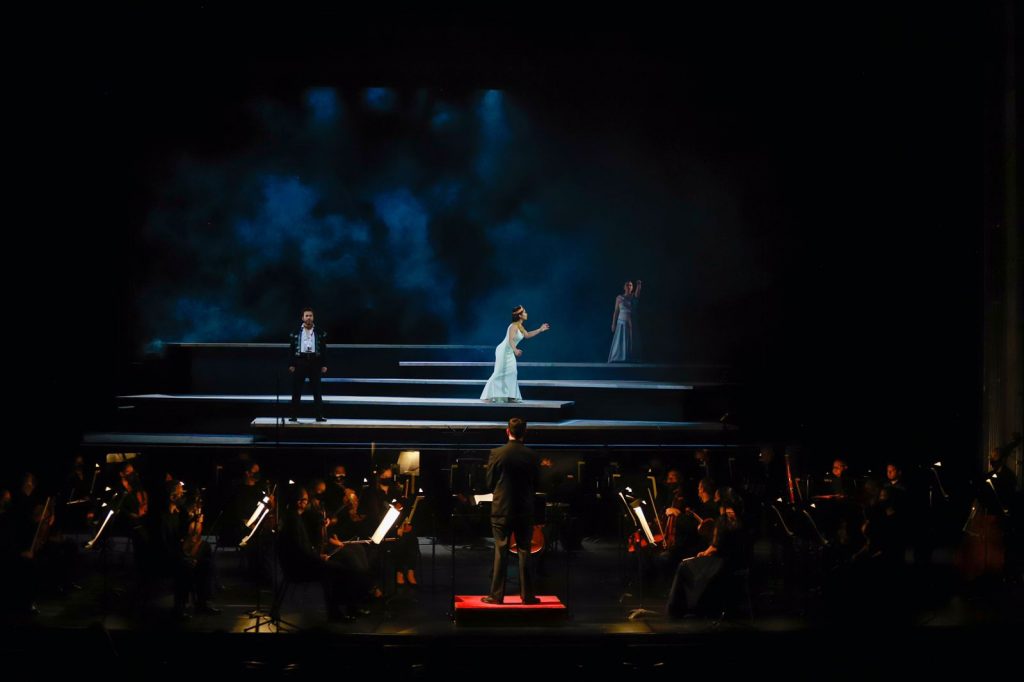
The opera “Montezuma”, with a semi-staged production by Ruby Tagle premiered in 2021. Photo: Palacio de Bellas Artes, Opera de Bellas Artes.
Today, the Institute is directed by the prominent Doctor in Anthropological Sciences Lucina Jiménez López, while the opera company is led by Alonso Escalante Mendiola, who had already come to promote opera at the Bicentennial Theater and detonate the lyrical activity in the central region of Mexico. In recent times, as the restrictions due to the COVID-19 pandemic have been gradually lifted, the Palace of Fine Arts has recovered operas of baroque repertoires such as, for example, Montezuma by Carl Heinrich Graun, with a staging of Ruby Tagle and the conduction of the teacher Iván López Reynoso.
An architecture to explore the mestizo culture and modernity
In the heart of the Historic Center, on Avenida Juárez, after a large esplanade and plaza that competes in size and magnificence with the Zócalo of Mexico City, this imposing palace of Mexican arts and culture is located. From the outside, the building immediately shows a Mexicanized Art Nouveau style, with a sculptural aspect that gives it nationalist touches and grandeur, key elements to stand out as an architectural identity during its different construction stages.
The ornaments on the façade are inspired by the flora and fauna of Mexico, as well as motifs of pre-Hispanic origin that are also present inside. In the same space, there are decorations and decorations made by sculptors and artists such as André Allar, Paul Gasq, Leonardo Bistolfi and the original architect of the theater, Adamo Boari.
The interior of the Palacio de Bellas Artes is an eclectic spectacle of style and design. Influenced by Art Nouveau and Art Déco trends, geometric shapes and straight lines underline the spaces and rooms. The walls, floors and columns that run through the building are covered with Mexican marble of various colors and brought from different areas of the country such as Querétaro, Nuevo León, Durango and Guerrero. The cupola that crowns the lobby is a grand metal frame. Copper, onyx and ceramic cover this armor and give the feeling of observing a kaleidoscope of emotions fueled by the interweaving colors. The magic of the interior is also enhanced by the masks of Chaac, the Mayan deity who delivers the rain. Another figurehead, this time from Tláloc, the Teotihuacan god also of rain, adorns the entrance to the hall of the performance hall.
In this room, with a glass ceiling in the interior dome, the metal structure curtain appears majestic. As the Mexican journalist Miriam Vidal describes, the curtain “holds a huge opalescent glass mosaic […] More than a million crystals measuring two square centimeters shape a panoramic view of the Valley of Mexico, inspired by a work by Gerardo Murillo”.
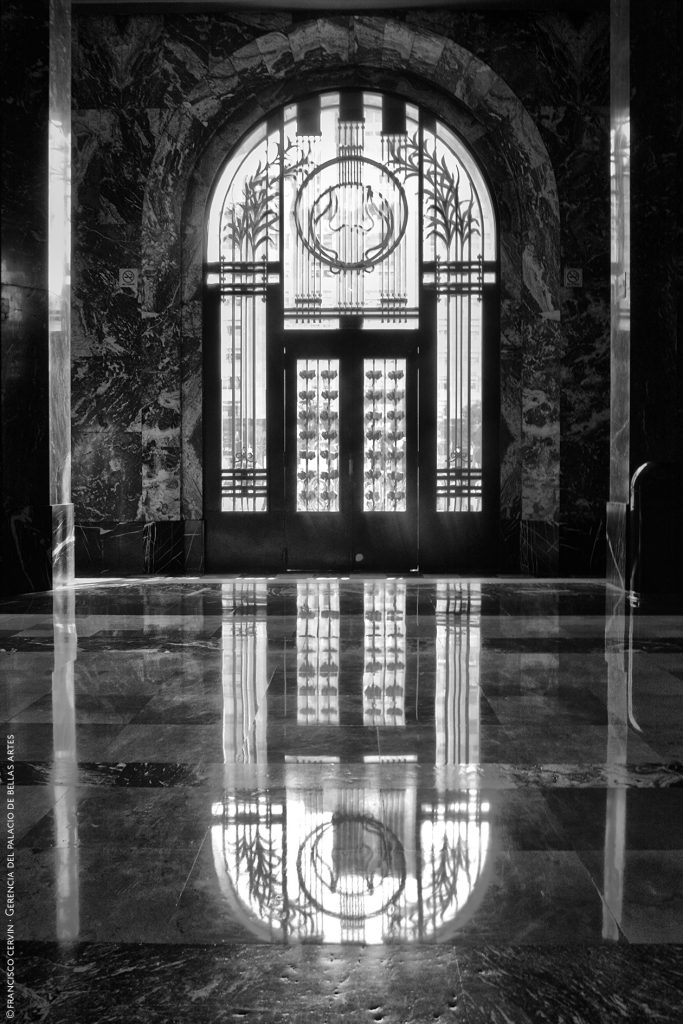
Hall of the Palace, noted for its structures lined with Mexican marble. Photo: Francisco Cervin – Management of the Palace of Fine Arts.
In addition to the performance halls, on the third and fourth floors of the Palacio de Bellas Artes there are exhibition spaces and one of the building’s greatest prides: the collection of murals by prominent Mexican artists such as Diego Rivera (The Man Controller of the Universe , 1934), David Alfaro Siqueiros (The new democracy, 1945) and Jorge González Camarena (Liberation or Humanity frees itself from misery, 1963).
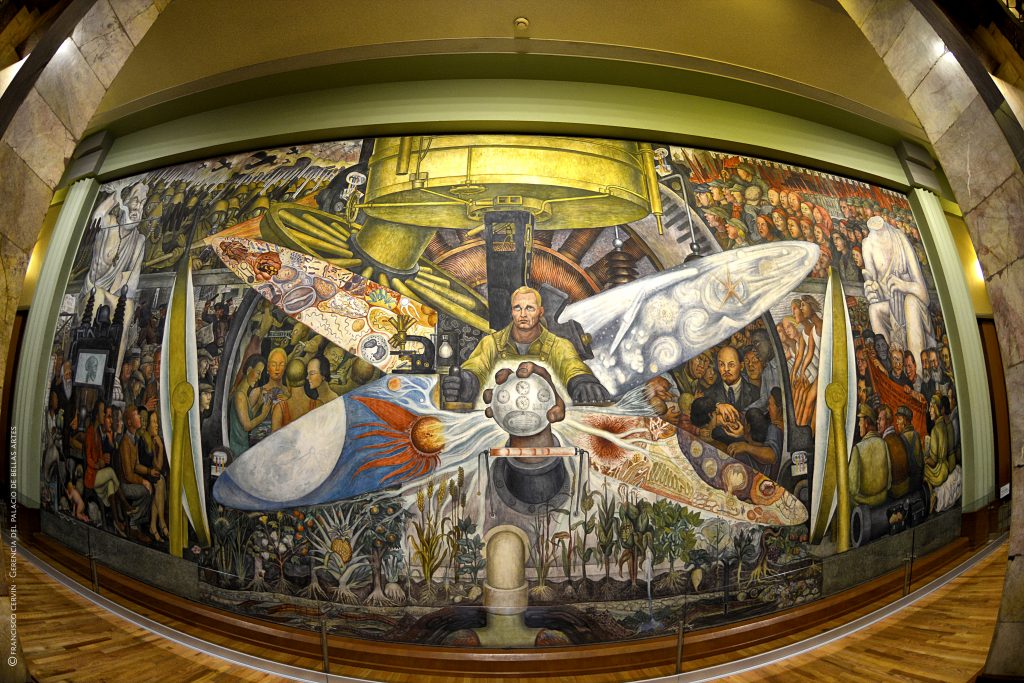
“The controlling man of the universe”, mural by Diego Rivera in the permanent collection of the Palacio de Bellas Artes. Photo: Francisco Cervin – Management of the Palace of Fine Arts.
All this architectural, artistic and cultural heritage, in addition to a history crossed by the social, political and economic contingency of Mexico, make the Palacio de Bellas Artes a fascinating synergy of senses, emotions and exaltation of the mestizo heritage that marks the identity of the country.


